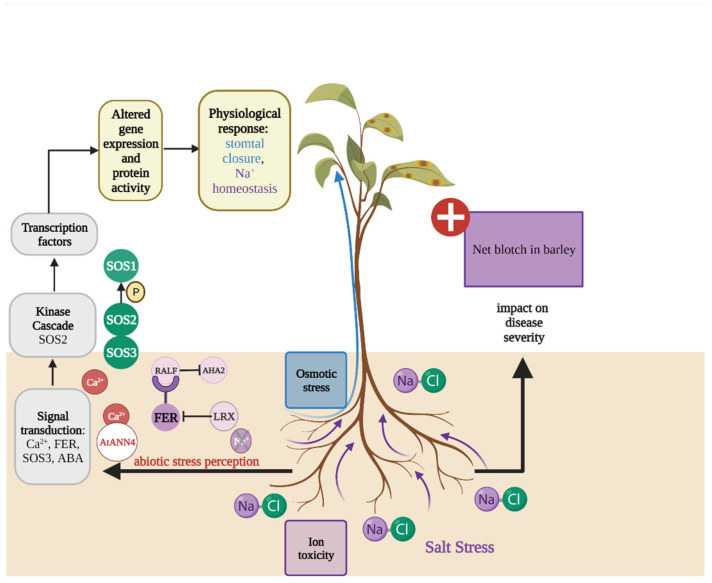Figure 3.
Overview of the salt stress signalling pathway in plants and effects of host salt stress on Dothideomycete-induced disease severity. Figure 3 highlights two pathways that are involved in the salt response leading to sodium (Na+) homeostasis (left) and the effect of salt stress on Dothideomycete-induced disease severity (right). In A. thaliana, the malectin receptor-like kinase FERONIA (FER)-pathway involves specific binding of rapid alkalisation factors (RALFs), which leads to FER phosphorylation and inhibition of plasma membrane H+-ATPase 2 (AHA2) and results in cell wall alkalisation. Salt stress-associated cell wall damage is sensed by the FER signalling pathway (purple) and is proposed to trigger transient cytosolic calcium ion (Ca2+) accumulation. In the absence of salt stress, leucine-rich-repeat extensins (LRXs) interact with RALFs and prevent the interaction with FER. The salt overly sensitive (SOS) pathway (green), which comprises a Ca2+-binding protein SOS3, leads to the export of Na+ from root epidermal cells to the soil via the Na+/H+ antiporter SOS1. SOS3 activates SOS2, a protein in the sucrose nonfermenting 1 (SNF1) related protein kinase 3 (SnRK3) family. At the plasma membrane, the SOS3-SOS2 complex phosphorylates SOS1 resulting in increased Na+ efflux. The Ca2+ permeable transporter AtANN4 in A. thaliana may form a negative feedback loop to fine tune the influx of Ca2+ in response to salt stress.

